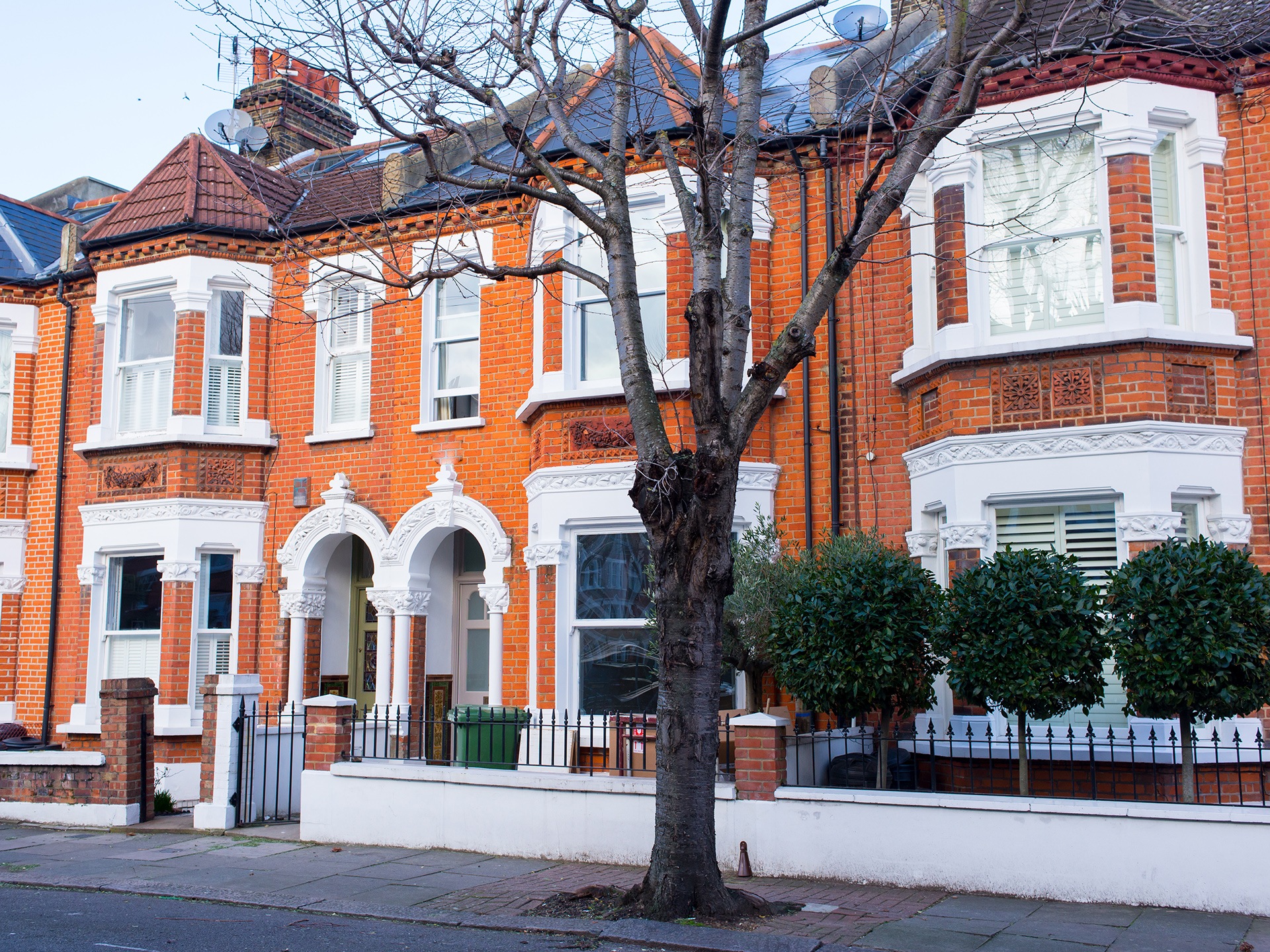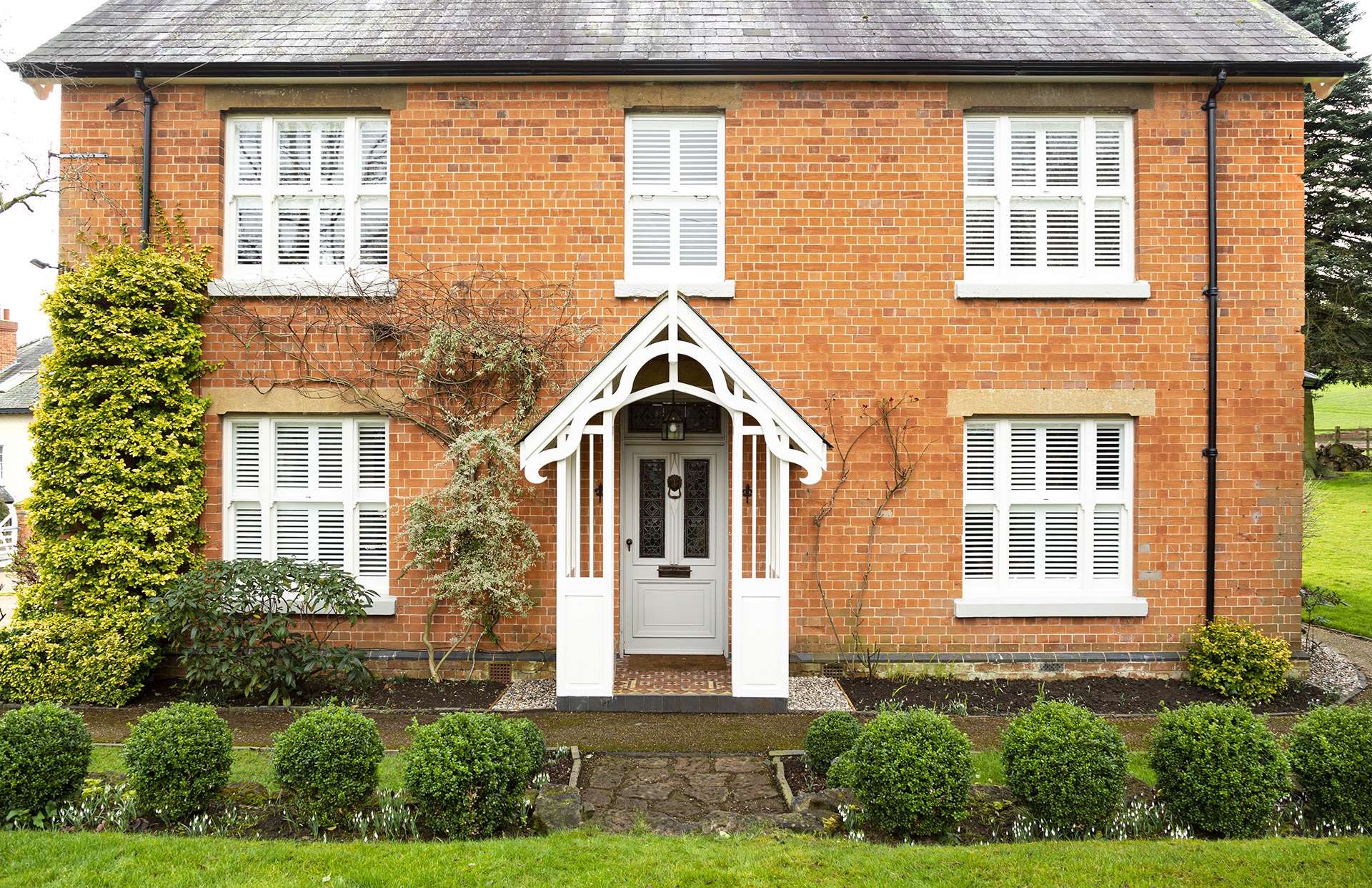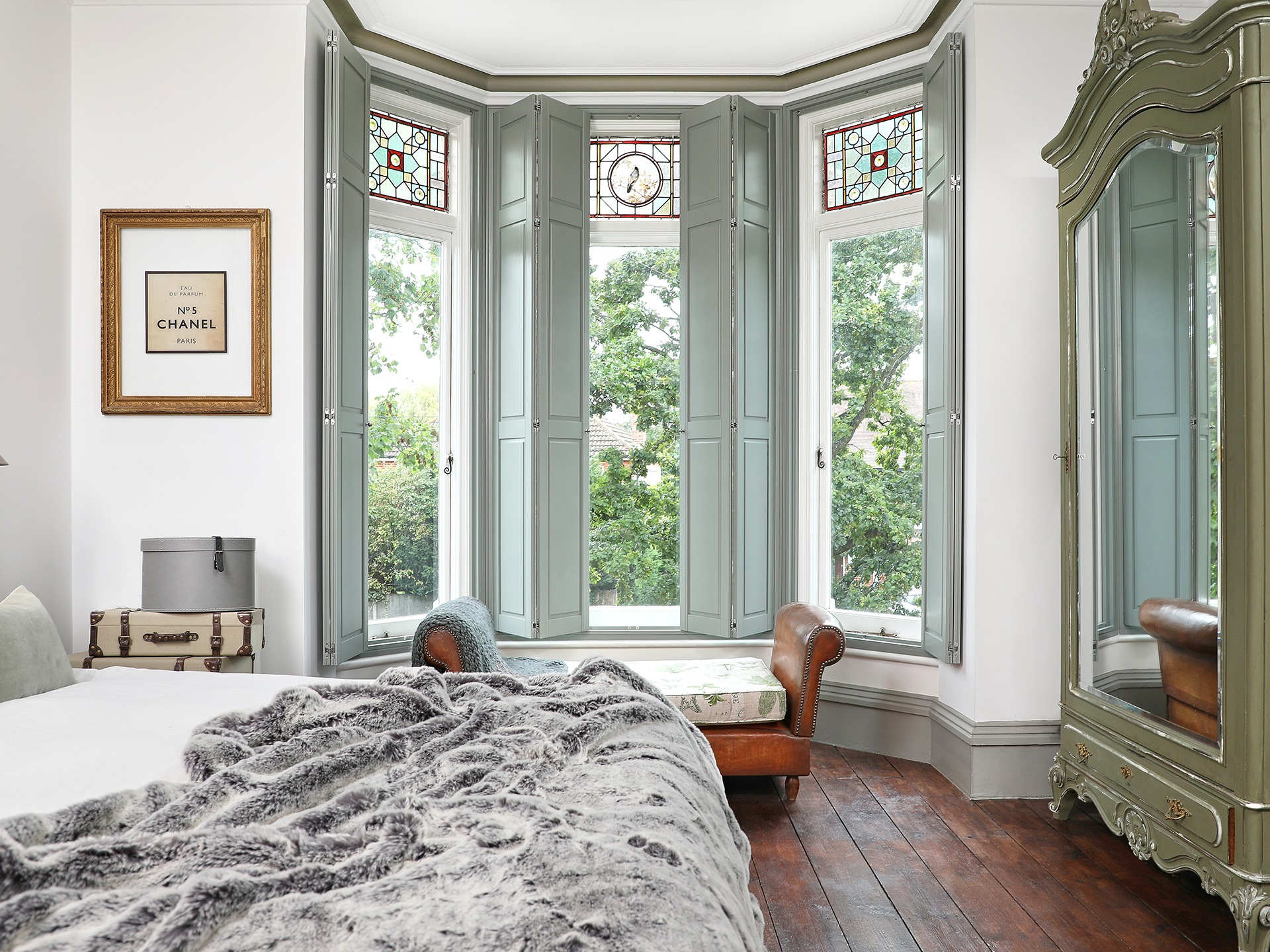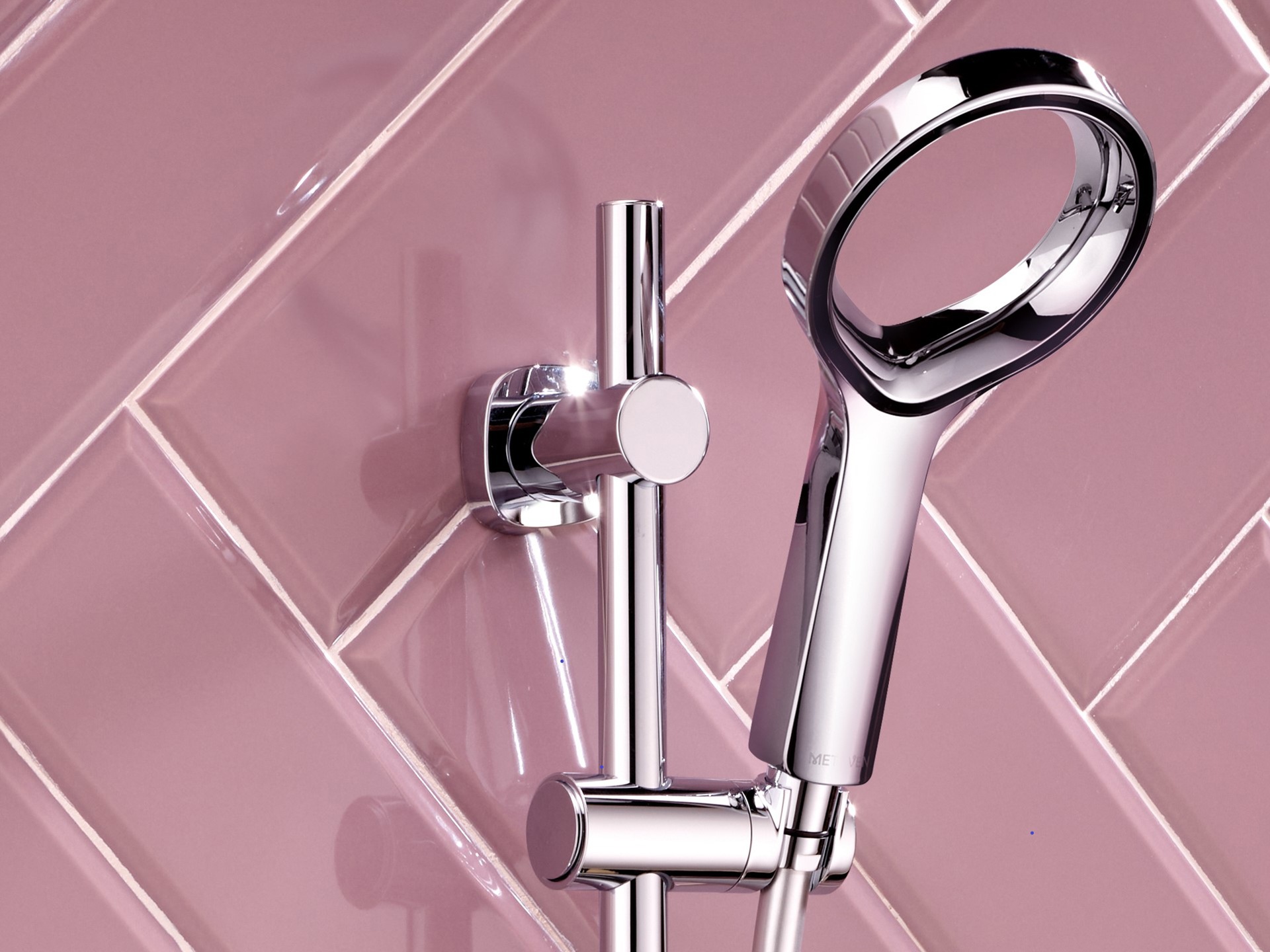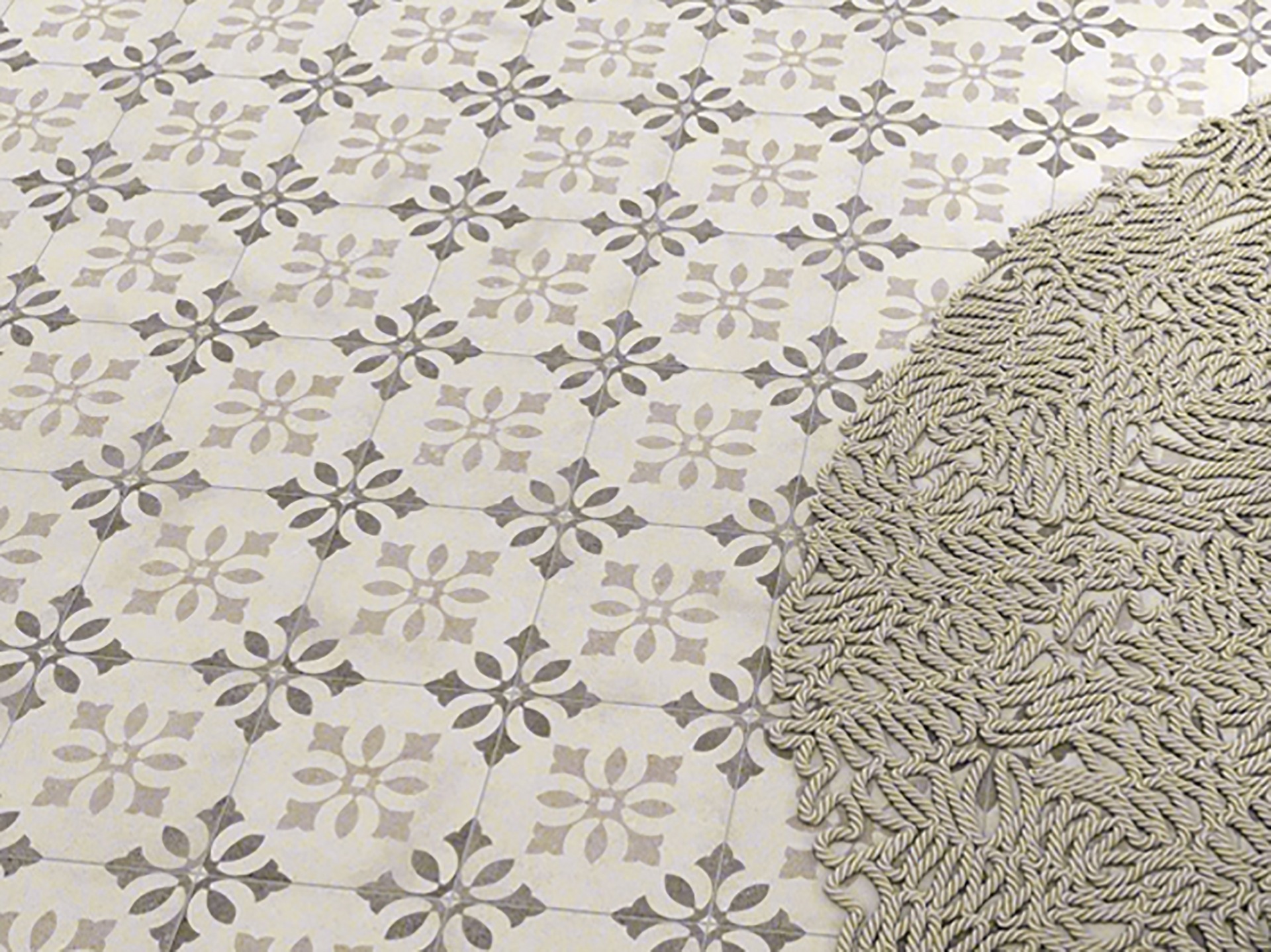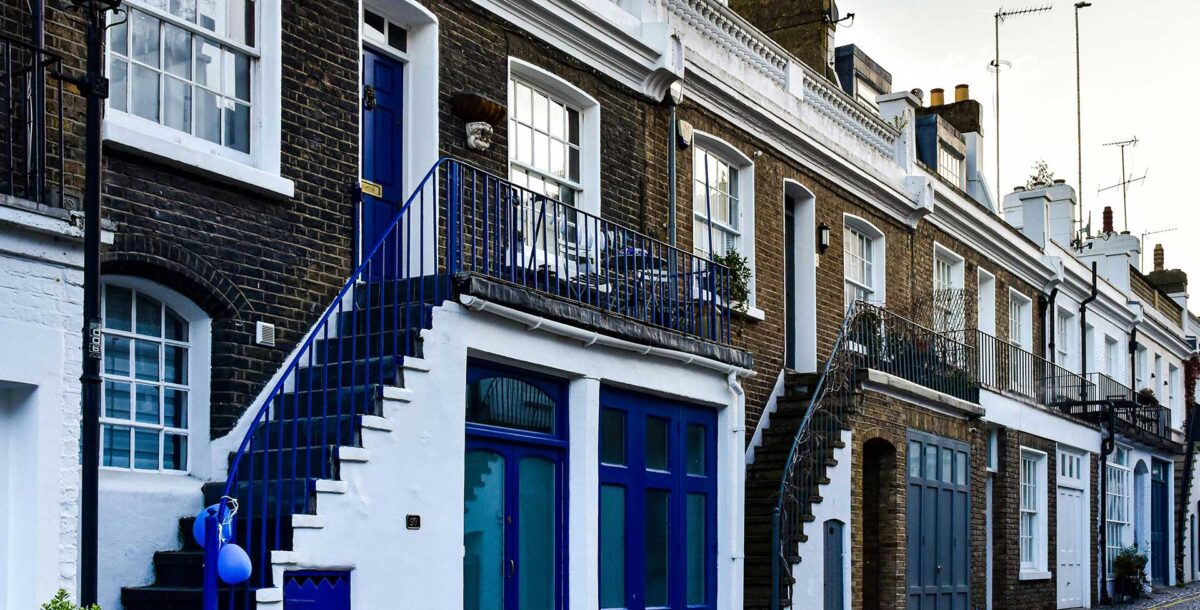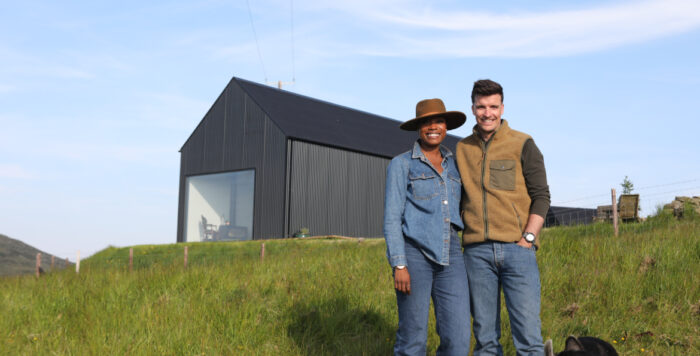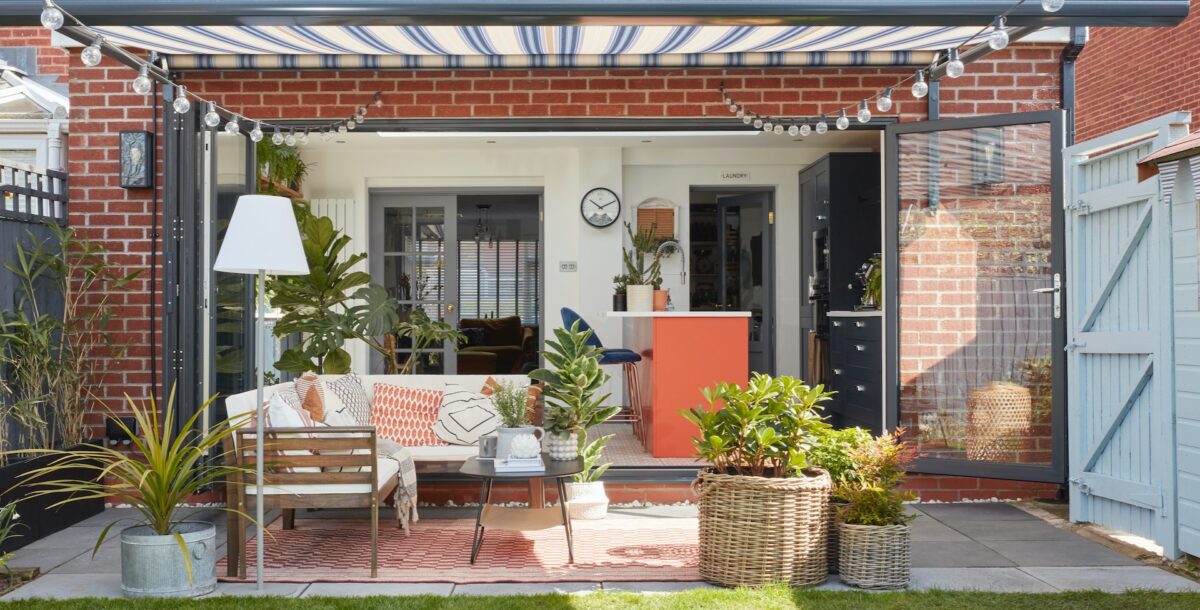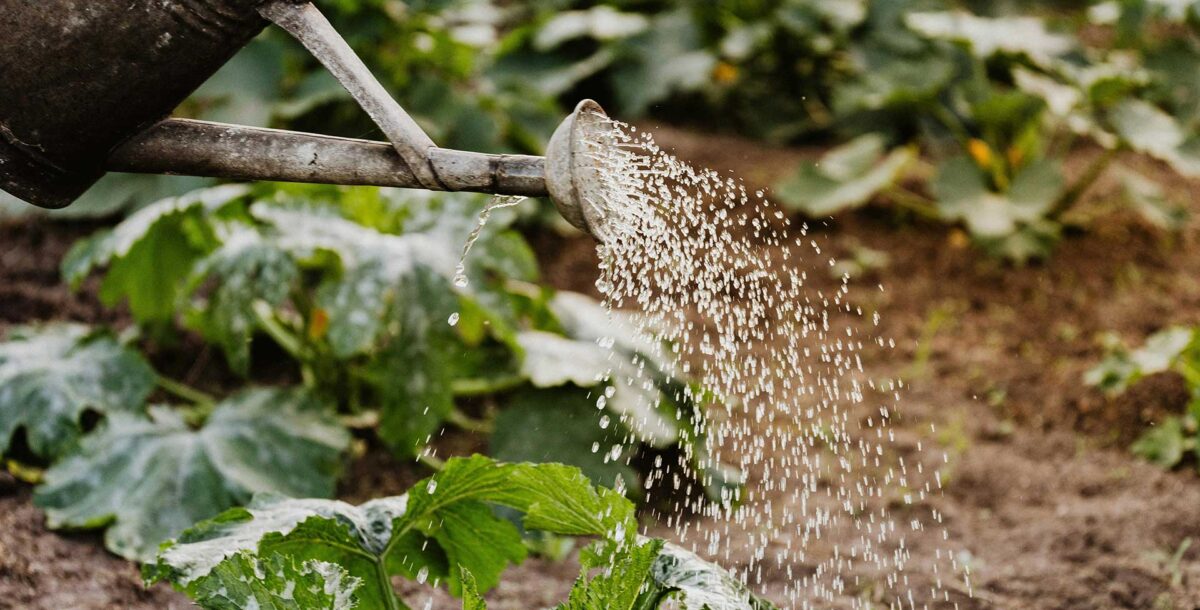How to make a Victorian house more eco-friendly
The very things we love about our period properties make them less energy efficient than more modern houses, but there are options to improve them and reduce bills.
Britain has the oldest housing stock in Europe, perhaps even in the world. About 10% of people in the UK live in Victorian or older properties, and another 10% in Edwardian homes, which structurally resemble Victorian properties in many ways. All together, nearly six million homes in the UK were built before 1919, long before current ideas about energy efficiency and the development of modern, thermally efficient materials. So how do you set about retrofitting one of these period homes to make it as energy efficient and eco friendly as possible? Here’s what’s involved.
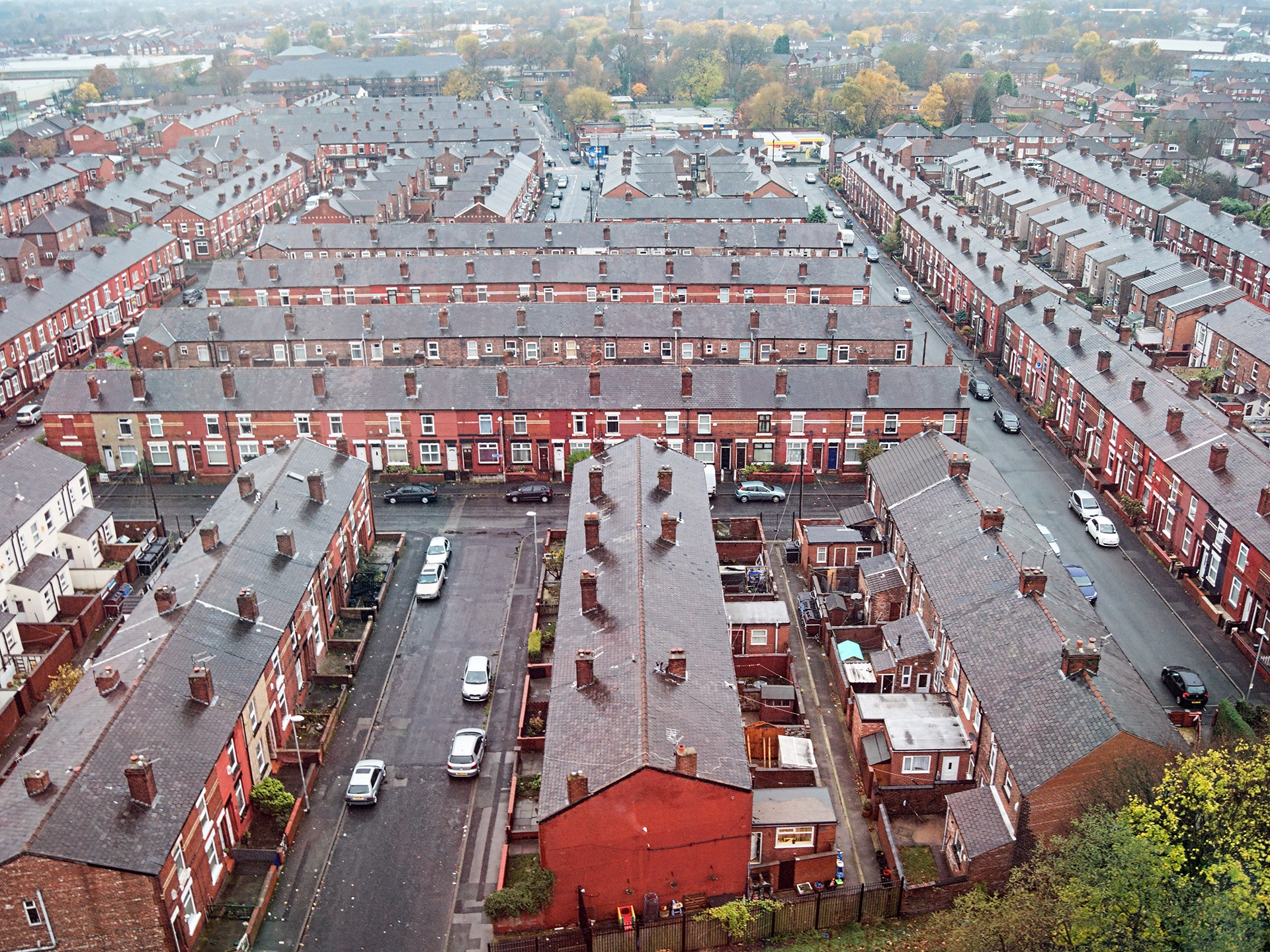
- Image credit: Adobe Stock
Jon Bonnar, of renewable-energy company Cotswold Energy, says, “Typically built with red brick and slate roofs, Victorian homes come in a variety of styles – from terraced houses to townhouses – and are sought-after for their high ceilings, sash windows, spacious rooms, and character. The downside? Their character often comes at the cost of energy efficiency. They are often colder than modern homes. This is because they were built with solid walls and no internal cavity for insulation. Often, they also lack insulation in the roof and floors.”
Jon continues, “Figures from the ONS report on the energy efficiency of UK housing show that Victorian properties have an average energy efficiency score of 58 in England and Wales, putting them in band D. In comparison, homes built after 2011 have an average energy efficiency score of 83, ranking them in band B.”
William Hobbs from MyJobQuote.co.uk, the UK’s leading trades-matching site, adds, “Victorian houses were built between 1837 and 1901. As you may expect, environmental concerns were not at the forefront of people’s minds at the time. Neither did they have the materials or technology to insulate, heat or build eco-friendly homes. So, how do you make a Victorian house eco-friendly for the 21st century? The answer is to retrofit. This means adding technology or materials designed for modern properties, to older homes. And eco-retrofitting aims to reduce the carbon footprint of the property and lower emissions by saving energy, minimizing heat loss and using green heating solutions.”
Energy assessment
If you’re about to embark on a home-renovation project with environmental considerations in mind, it is worth starting by getting a home energy assessment done. Becky Lane, CEO at energy-efficiency retrofit specialists Furbnow, says,“The first step to retrofitting your home is to get it assessed. Retrofitting energy-efficiency measures in a Victorian home does present unique challenges due to the age and construction of these properties. However, with careful planning and appropriate solutions, significant improvements in energy efficiency can be achieved.”

- Image credit: Adobe Stock
The Government has a list of accredited energy assessors. For between about £60 and £120, an energy assessor will issue you with an Energy Performance Certificate (EPC), which contains lots of useful information about the current energy performance of your property and recommendations for what to do to improve matters. These last ten years and are necessary if you are selling or renting out your house, so, if your property has been on the market in the last decade, it will already have an EPC that you can consult.
Getting consent
Remember that if you live in a listed building or conservation area, you might need to apply for listed building consent and/or planning permission, rather than being able to rely on being allowed to do work under permitted development rights.
Loft insulation
Jon says, “The lack of insulation means Victorian homes are prone to losing heat quickly. Their fireplaces and floorboards can make them draughty, while the high ceilings mean there is simply more space to heat. Adding to, or improving, the insulation of a Victorian home is typically the first – and best – step most homeowners should take to improve its energy efficiency. It instantly reduces heat loss, significantly reducing energy usage. In addition, it offers a great return on investment, as the upfront cost is recouped through lower energy bills over time. Even better, it sets the foundation for further improvements, as a well insulated home is more suitable for renewable-energy initiatives such as heat pumps.
“Start by tackling the biggest heat-loss culprits, such as the roof, walls, and floors. For example, you could insulate the loft with mineral wool rolls between the joists. Walls can be insulated internally or externally, depending on your budget and preference. Floor insulation involves lifting floorboards to place mineral wool between the joists.”

- Image credit: Adobe Stock
Jon explains, “You may be eligible for The Great British Insulation Scheme, a government scheme designed to help fund energy-efficiency improvements. If you own your own home, or have the permission of your landlord, and your property has an EPC rating of D, E, F or G and you’re in Council Tax bands A to D in England (or A to E in Scotland and Wales), you may qualify for free insulation.
“Another funding option is the ECO4 scheme – another government-backed programme that aims to improve the energy efficiency of homes across the UK – and can include insulation. To qualify, you must own your own home, or have the permission of your landlord; your property must have an EPC rating of D, E, F or G, and you must receive certain benefits.”
Wall insulation
The lack of cavity walls on most Victorian homes means the only options for insulating the walls are external and internal wall insulation. These are expensive and disruptive works that could involve covering up period features. For that reason, many people living in Victorian homes choose not to insulate the walls of their homes and focus on other measures.
Draught-proofing
Draught-proofing is something much more attainable. William says, “Tackling draughts by fitting heavy, floor-to-ceiling curtains, draught excluders on the bottom of doors and in your letterbox, and replacing old wooden windows with double or triple glazing will all improve the overall insulation of your home. Fitting an unused chimney with a chimney balloon or similar draught excluder will also significantly reduce heat loss.”
Becky adds, “You can seal draughts using methods like draught-proofing strips, sealant, and secondary glazing. Consider insulating loft hatches and ensure floorboards are sealed. Install airtight doors and windows where possible.”
Windows
If your Victorian property still has its original sash windows, these are likely to be a bit draughty by now and, of course, single-glazed, as opposed to today’s more thermally efficient double or triple-glazed windows. Jon points out, “Approximately 18% of heat in a home is lost through the windows, and homes with single-glazed windows lose heat twice as fast.”
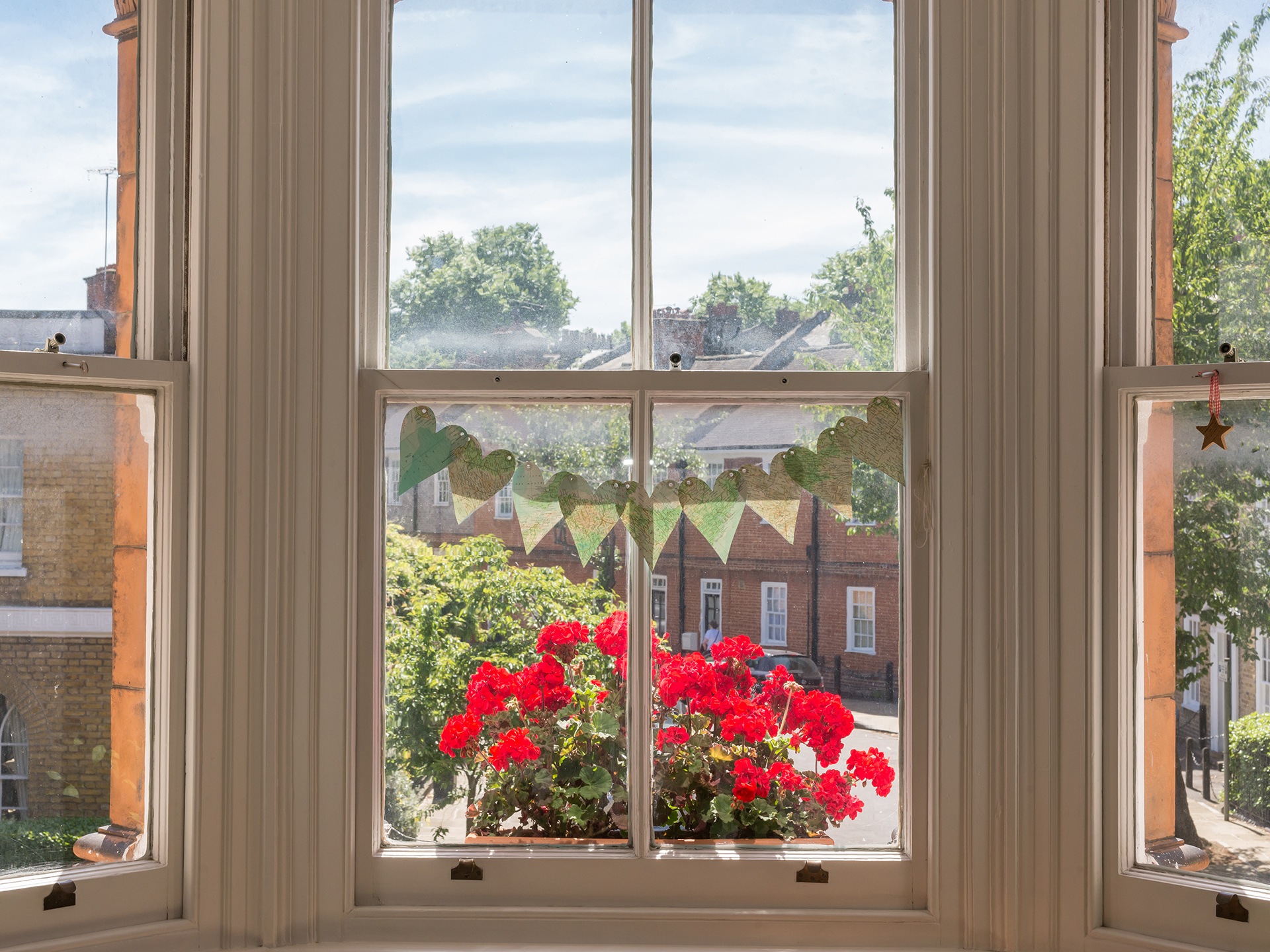
- Image credit: Adobe Stock
To improve the energy efficiency of the windows while retaining the external look of the property, you can get new made-to-measure double-glazed timber windows, but these will be expensive: from roughly £1,500 per window – about twice the cost of uPVC replacement windows. But, on a period property, it’s often worth going for timber windows, if you can afford to, because they retain period character and have ‘kerb appeal’. With the right maintenance they will also have a much longer life than uPVC windows. But they do require a hefty upfront investment. You can read more about in this in our guide on how to draught-proof your sash windows.
Secondary glazing
Secondary glazing is another option for improving thermal efficiency while leaving your original windows intact. There are various types of secondary glazing, but basically these are completely separate windows that sit inside your existing windows and open independently of them. Andrew Haydon at Simply Plastics says, “If you don’t want to lose the aesthetics of Victorian windows, but make them more eco-friendly, secondary glazing can add an extra layer of insulation without being an eyesore. They can be custom-made to fit awkward-sized windows, and help make your home far more energy-efficient in the long-run.”
Dressing your windows
Lisa Cooper, head of product design at Thomas Sanderson, has another idea for improving the thermal performance of your windows. She explains, “Window coverings like shutters and insulating blinds can significantly improve thermal performance, reducing heat loss by up to 55%. For instance, Duette blinds, with their unique honeycomb design, can trap air and potentially reduce heat loss by up to 55%, depending on configuration. Shutters are another excellent option, offering year-round benefits. Studies show they can reduce heat loss by around 36%, sealing off drafts and creating a cosy feel when closed.”
Mechanical ventilation
If you install lots of insulation and improve the airtightness of your house, it will be really important to think about how to avoid condensation and damp. You many need to consider installing some form of mechanical ventilation system such as positive input ventilation. This is why it is important to try to take a holistic, whole-house approach rather than doing piecemeal work, and to get advice from relevant experts.
Low-carbon heating
The story used to be that the standard low-carbon heating choice – the heat pump – just didn’t suit the UK’s older properties. But this narrative has changed: the technology has progressed – the latest heat pumps, often using new refrigerants, are more efficient than earlier generations – and the best installers have learned how to design low-carbon heating systems that work well in older properties. Because heat pumps work at a lower temperature than gas boilers, you may need to change your radiators to get the system to work well. Other options to consider are low-H20 radiators that work well with heat pumps or high-temp heat pumps, which can work in harder-to-heat properties that other heat pumps just don’t reach. But the best place to begin is by finding a really good heat-pump engineer using online reviews and word of mouth. They will be best placed to tell you what will work in your home.
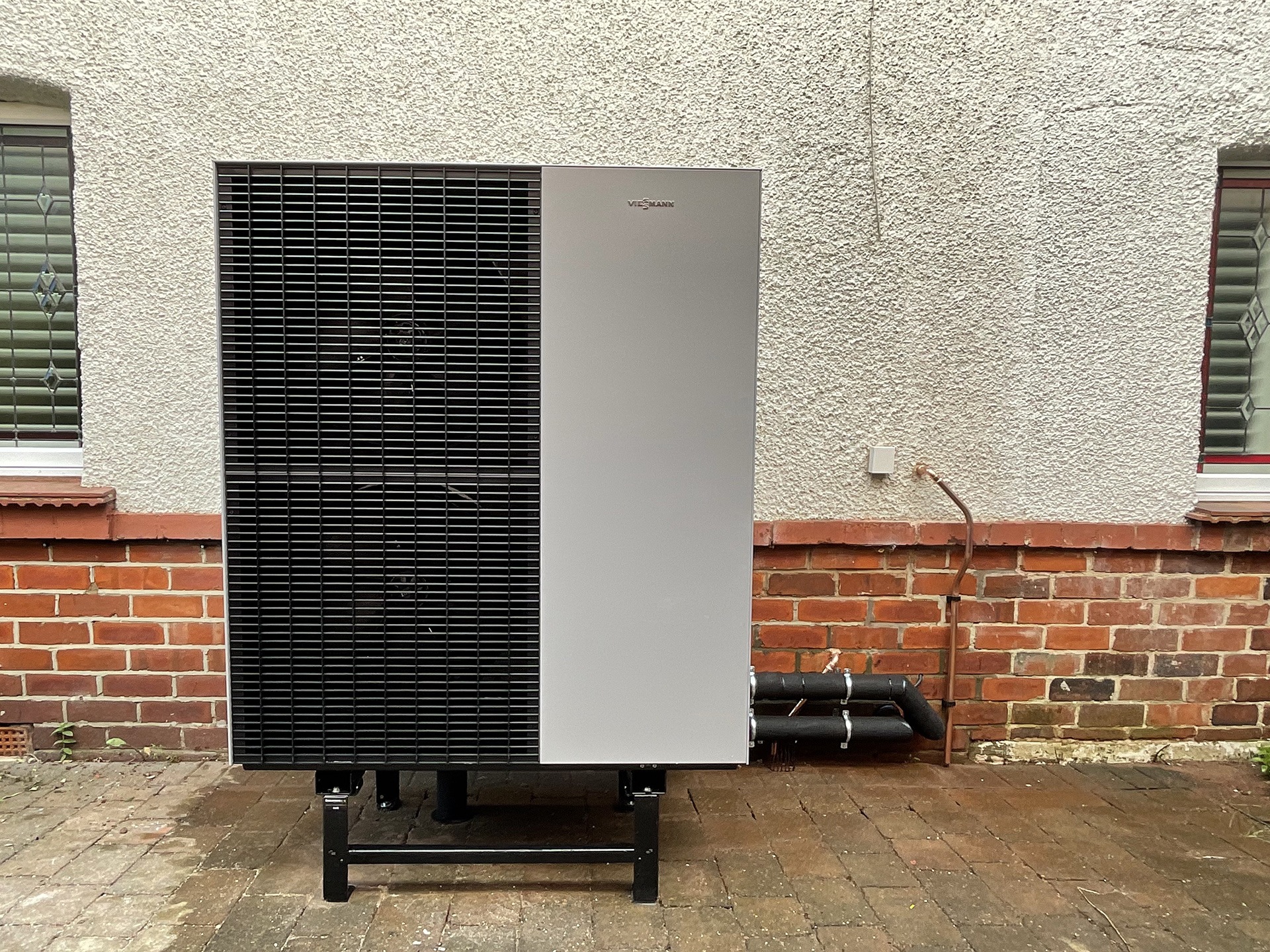
- Image credit: Viessmann
Grants of up to £7,500 are available towards the cost through the government’s Boiler Upgrade Scheme (BUS) (potentially more in Scotland).
Solar panels
If you like the idea of renewable energy, solar panels are another option worth considering, but for some people, these remain a controversial addition to the roof of a period home. They are expensive, too. Becky says, “Often there is limited roof space on Victorian properties and sometimes the property is also bound by planning restrictions that can pose challenges for renewable-energy installations. My advice is to explore options like solar PV (photovoltaic) panels or solar-thermal systems, if roof space allows.”
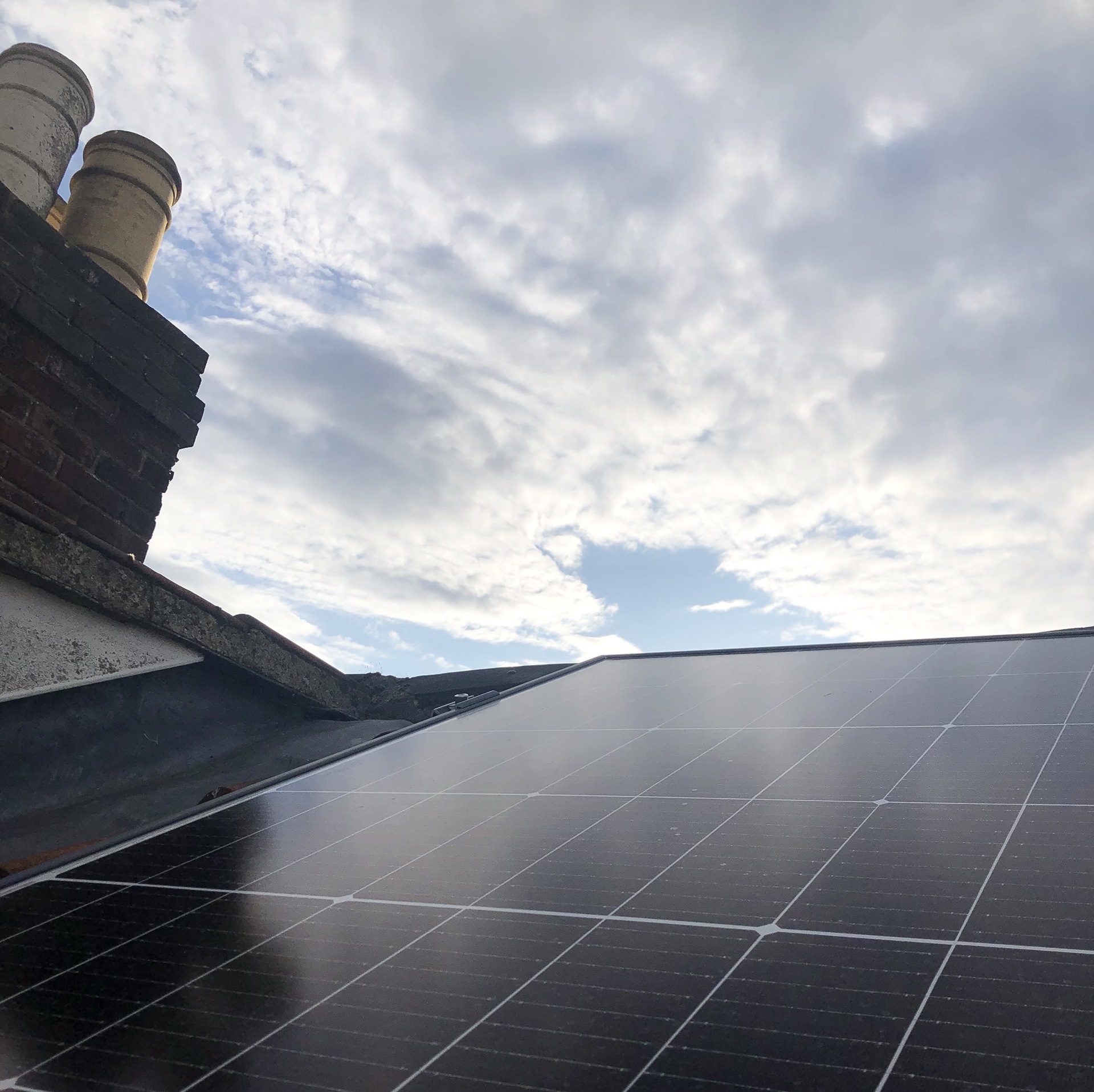
- Image credit: Total Renewables
Jon adds, “When it comes to Victorian houses, there are a couple of key considerations. For one, the roof needs to be structurally adequate, in good condition and have enough south-facing space for optimal sunlight exposure. Secondly, in a listed home, you’ll need to apply for planning permission. To qualify, you may need to ensure that the solar panels won’t alter the structure of your property and the installation must be reversible.”
Water use
Another issue you could consider when retrofitting is how efficiently your property uses water. There are easy ways to reduce your water use, no matter what type of home you live in. For example, put in a low-flow shower head (like the one pictured below); and set up a water butt to collect rainwater from your roof to use it in the garden. Mike Whitfield, from Lusso, says, “Victorian houses may have outdated plumbing fixtures and appliances. From our baths and showers to our toilets, bathrooms are the culprits for a large portion of our home’s water consumption. Luckily, there are some modern swaps which can make these rooms more energy-efficient, making the bathroom the perfect place to start any eco-friendly renovation.
He advises, “If you’re looking to make a bathroom more eco-friendly, it makes sense to invest in a rimless toilet. As well as providing a clean and contemporary feel, rimless toilets are far more energy-efficient than the standard rimmed designs you’re likely to find in a Victorian house. Thanks to a direct-flushing technique, rimless toilets use only half of the volume of water required by older cisterns. Picking a dual-flush model provides further control of the amount of water used on each flush.”
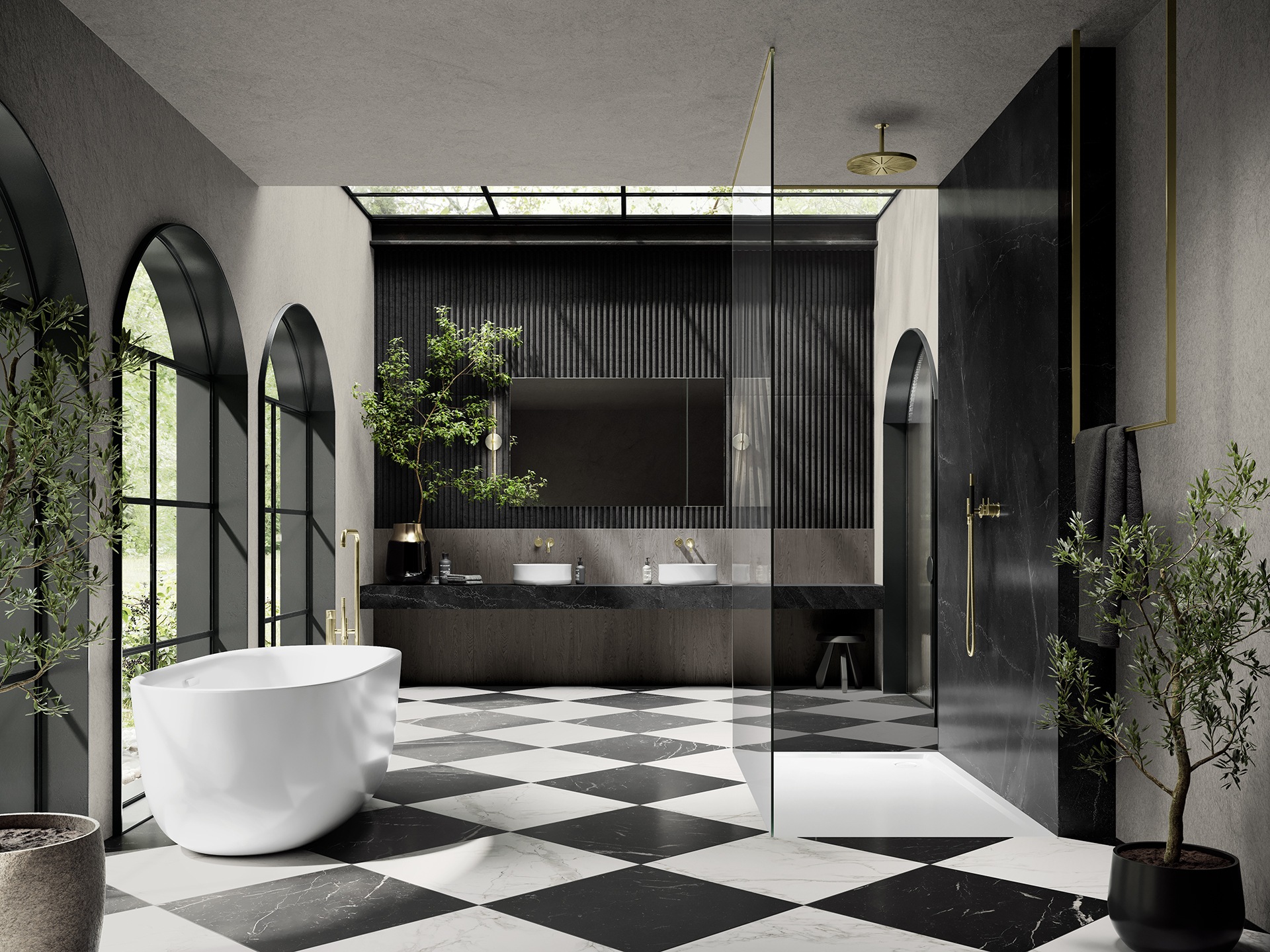
- Image credit: Kaldewei
Research whether new fixtures and fittings will be recyclable at the end of their life. Manufacturers such as Kaldewei have bathroom fixtures and fittings that are fully recyclable. We’ve got more ideas how to make your bathroom eco-friendly.
Reuse
Another way to help retain the period charm of a Victorian property while renovating sustainably is to source reclaimed materials from traditional reclaim or salvage yards or online. Use reclaimed bricks, tiles, ironwork, doors, garden features etc when you can rather than new. Joseph Holman, founder and CEO of upcycling company Green Doors, says, “We give doors a second chance when most think they are only worthy of skipping or being sent through the recycling process, neither of which is good for the environment. We rescue items from around the country, purchasing them from fabricators and tradesmen, and bring them back to our unit where they go through a multipoint inspection by our ‘Door Doctors’; are refurbished; and then advertised to find a new home. We have thousands of doors and a massive variety, spanning decades of designs and styles. For example, we recently acquired some old pine church doors over 100 years old. Nothing is better than saving resources and reusing what we have previously produced, whether that’s a ‘mis-measure’ or a pre-owned item.”

- Image credit: Green Doors
Decorating
When it comes to decorating, choose water-based zero- or trace-VOC (volatile organic compound) eco-friendly paints, sustainable wallpapers, and flooring that is low in VOCs too. Think about using reclaimed, carbon-neutral and recycled products wherever you can. Get into the habit of reading the ‘Sustainability’ sections of retailers’ websites before you buy, if this is an issue that is important to you.
Becky sums it up like this, “Retrofitting Victorian houses can be costly, and funding options may be limited. Explore available funding schemes, grants, and loans for energy-efficiency improvements. Calculate potential energy savings and payback periods to assess the financial viability of retrofit measures.”
She continues, “Retrofitting is most effective when approached holistically, so a whole-house approach is much more cost-effective than focusing on individual measures. Develop a comprehensive retrofit plan that addresses multiple aspects of energy efficiency simultaneously. Prioritise measures based on cost effectiveness and overall impact on energy performance. By carefully addressing these issues and implementing appropriate solutions, retrofitting energy-efficiency measures in a Victorian terraced house can significantly reduce energy consumption, improve comfort, and contribute to a more sustainable future. It’s important to work with professionals experienced in retrofitting historic properties, and to tailor solutions to the unique characteristics of the house and its surroundings.”
Heat pump and solar panels in Norwich Victorian terrace
Like many of its neighbours, Lucy Galvin’s Victorian terraced house in Norwich was chilly, expensive to heat, and generating unnecessarily high levels of CO2. Energy bills that had doubled over two years and a desire to do her part to combat climate change prompted Lucy to look in depth at ways to save money and substantially reduce the household’s carbon emissions.
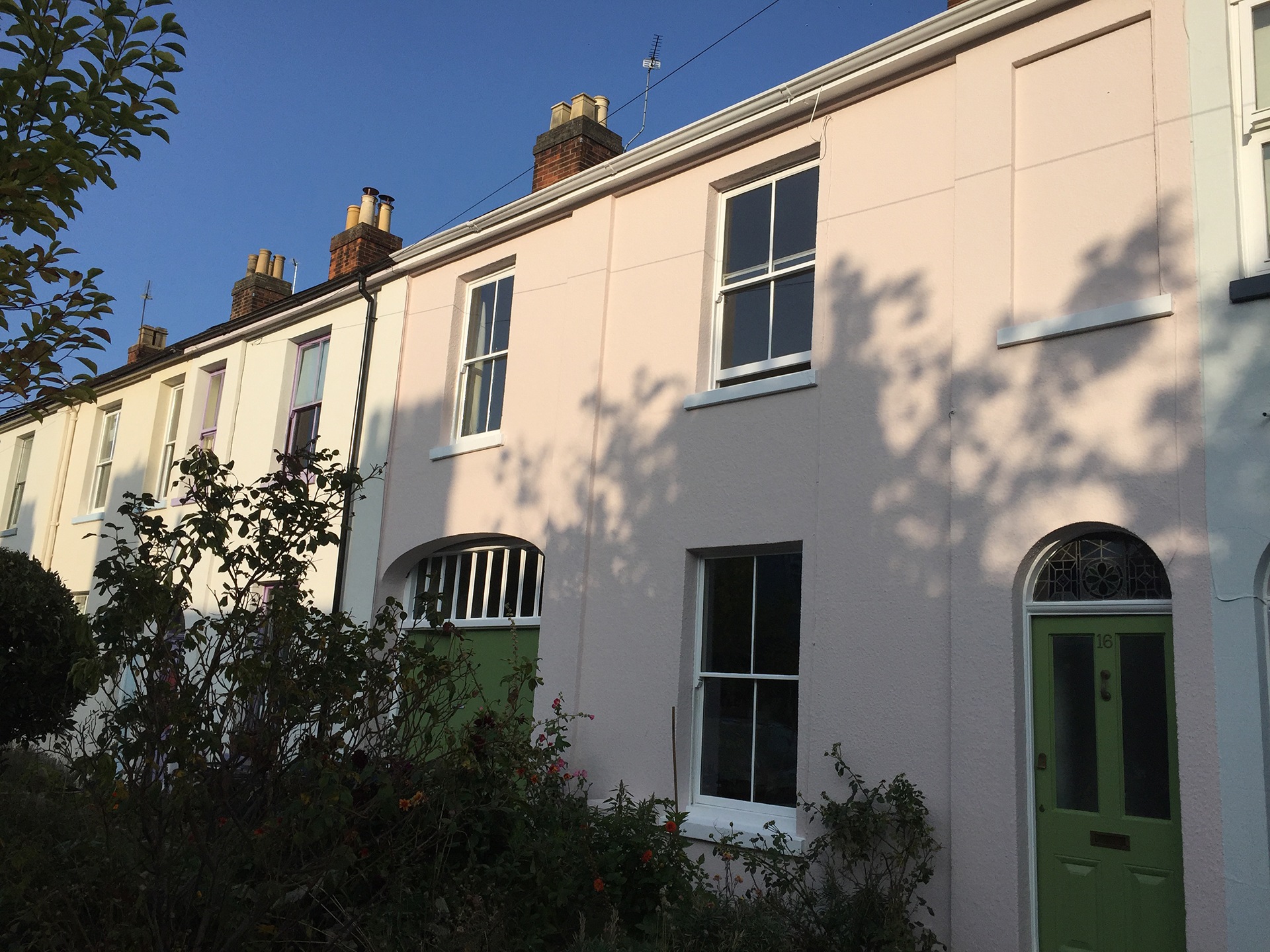
- Image credit: Viessmann
Lucy started by getting an EPC assessment. This returned an energy rating of D, in line with the national average. Plus points for the house were low-energy lighting and a newer back extension, which is quite well insulated. However, the building’s overall impact on the environment was rated as E. Lucy says, “We were producing 7.2 tonnes of CO2 a year, 20% more than average. I was determined to change that.”
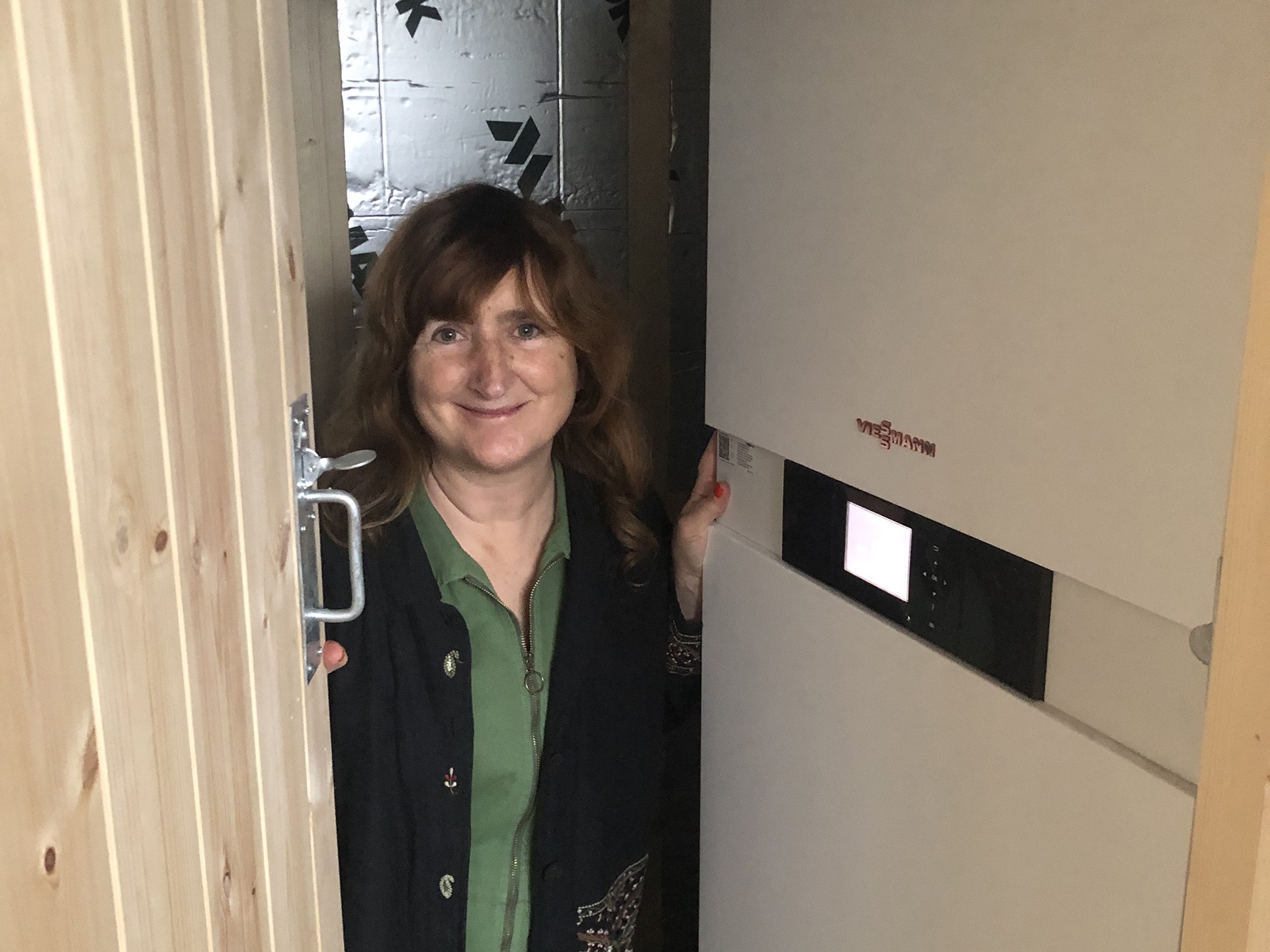
- Image credit: Viessmann
With limited funds and wanting to speed up the journey to decarbonisation, Lucy did a lot of her own research, too. “Almost immediately, I decided to disregard many of the EPC report’s recommendations,” she continues. “Insulation is very important, but it’s only part of the picture. If you want to get to zero-carbon heating, you also have to produce renewable energy. Electricity can be generated from clean sources like sun and wind, and gas can’t. I figured the sooner we get on to renewable generation the better.”
Her research showed that an air-source heat pump would offer the biggest environmental impact and bill savings for the investment, especially when factoring in the BUS grant.
Advised by a friend who had recently fitted a heat pump to “choose the installer, not the kit” as a top notch installer will always specify the best technology for the job, she set about finding the perfect engineering partner for the project. She got quotes from several certified businesses before opting for local renewable-heating experts Heat Different, which also came personally recommended.
Craig Forder, managing director of Heat Different, specified a Viessmann Vitocal 222-A 16 kW air-source heat pump. It is a very compact model, ideal for retrofitting in properties where space is tight. With a high flow temperature of 70°C it also works well with the Galvins’ existing radiators, which helped to minimise the cost and disruption of the installation.
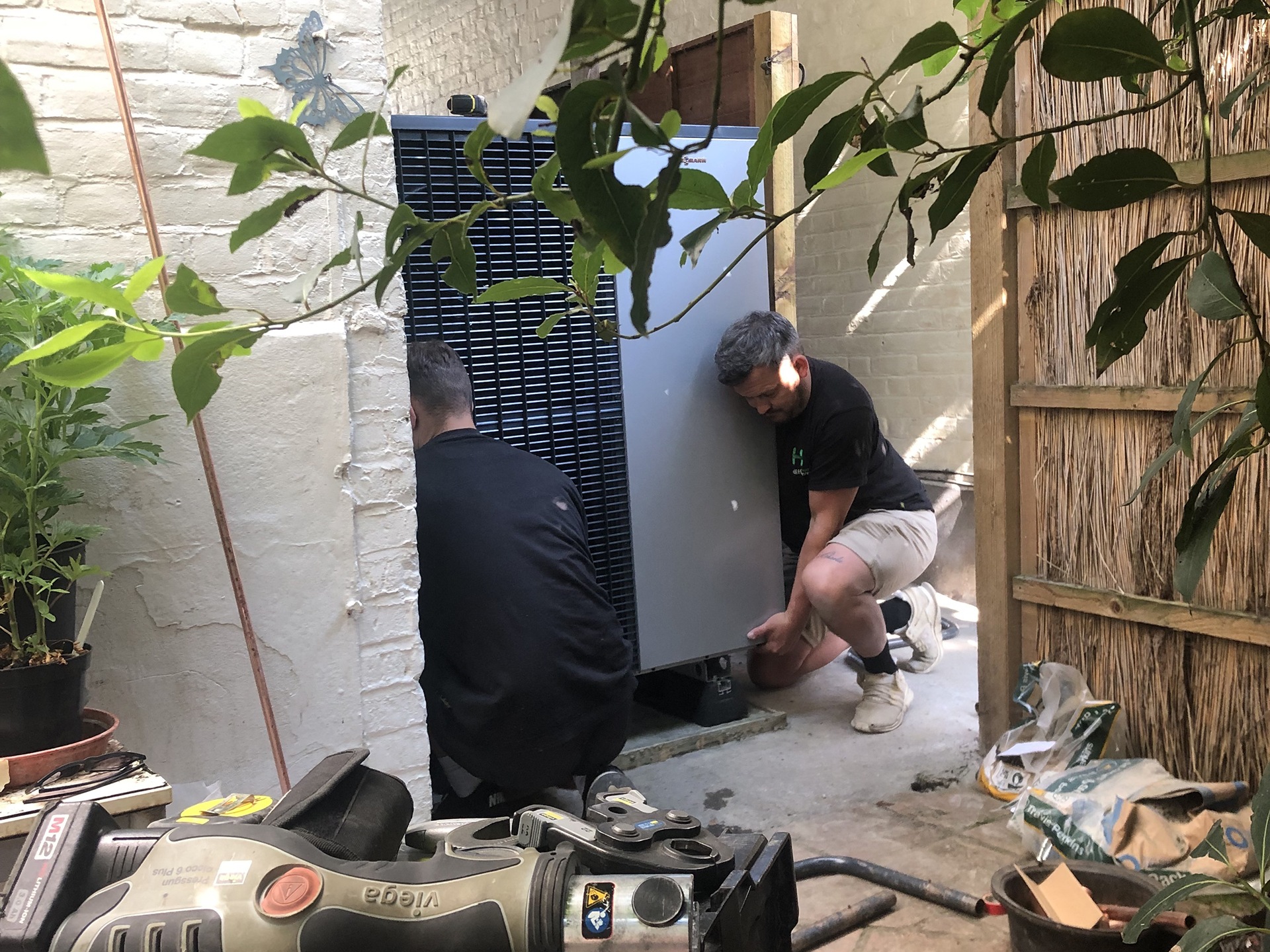
- Image credit: Viessmann
The exterior unit of the heat pump was installed to the rear of the property. Due to a prior loft conversion, the new water tank was also placed outside in purpose-built, specially insulated housing. The old boiler and ventilation pipe were removed, freeing up extra space indoors. “A huge benefit of losing the boiler was getting a whole cupboard back,” recalls Lucy.
Once the heat-pump installation was completed, Lucy switched her attention to electricity generation. Working with Norfolk-based solar specialists Total Renewables, she opted for six 2.55kWp PV panels with a 5kWh battery to store any excess energy generated. “Heat pumps are electric, so it’s great to be able to top up the energy they use from your own roof,” she explains. “In September 2023 we celebrated our first day producing more power (5.7kWh) than we imported (4.32KWh).”
Both the heat pump and solar panels are managed and monitored by Viessmann’s ViCare app. Lucy says, “The heat pump manages itself, keeping our home lovely and toasty, with a very pleasant, steady warmth.” The family’s energy bills have reduced considerably, too. “Even with the effect of price cap increases, our monthly bills have dropped by a quarter,” she continues. “And our overall emissions from space and water heating are less than half what they used to be, which is even better. In November 2023, they were 82.85kg CO2e, compared to 196.08kgCO2e in November 2022.”
With more upgrades planned for this year, including several double-glazed windows, an electric cooker and capping off the gas for good, further savings are yet to come. “By November, we hope to be fully electrified, and better insulated too, so bills and carbon will keep coming down.” says Lucy enthusiastically.

